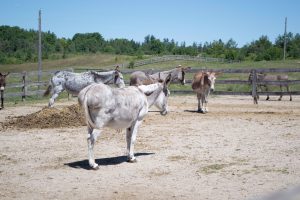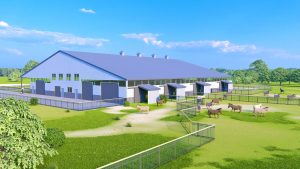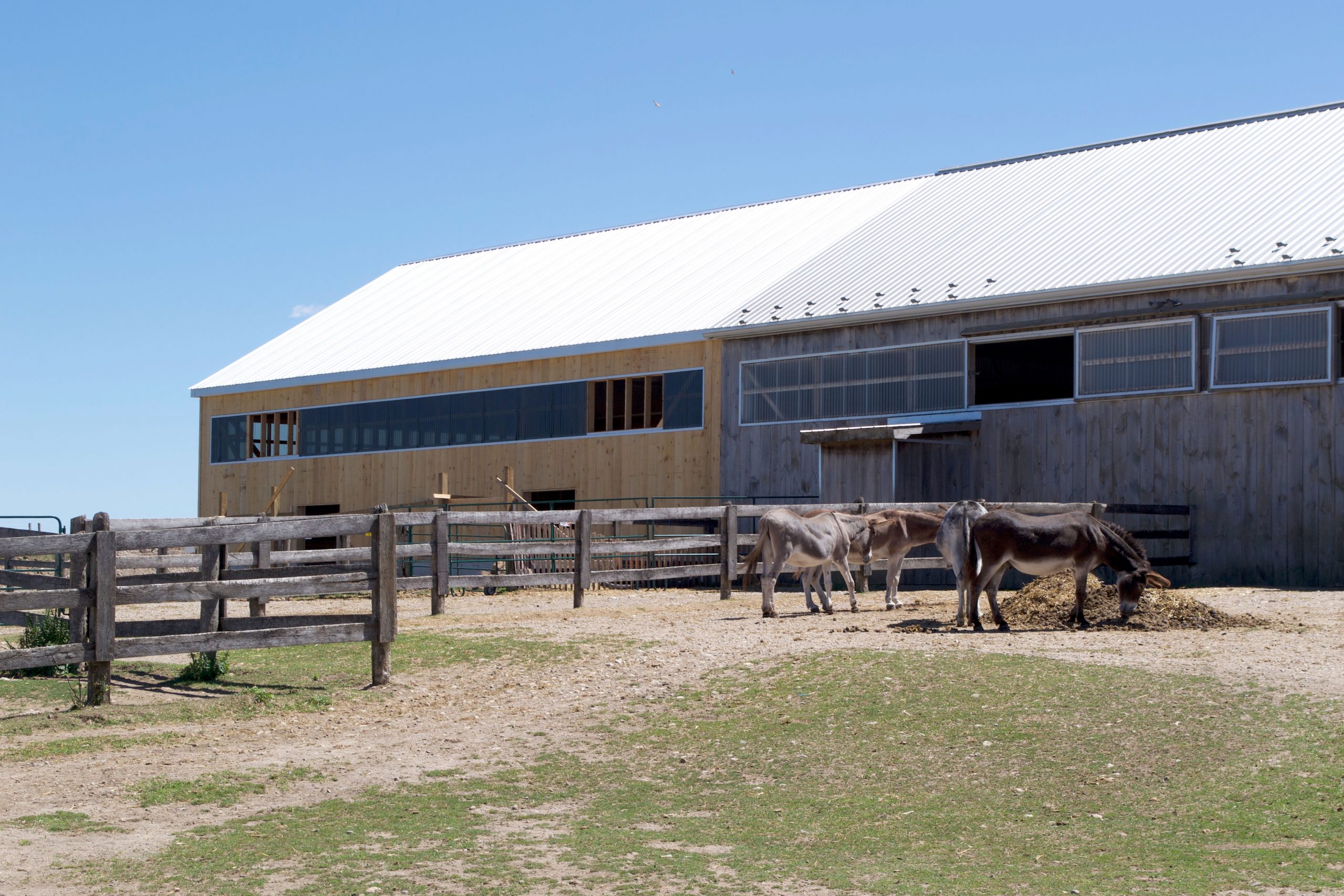PUSLINCH – To secure the longevity of its operations, the Donkey Sanctuary of Canada (DSC) is expanding its facilities on the farm.
The $2.5-milllion project includes a 4,000 square foot expansion of one of the existing barns as well as a new 19,000 square foot training facility and barn.
The expansion is the largest project the sanctuary has undertaken since its inception in 1992.
“Our facilities really limited us,” executive director Lesley Bayne said of the need for the expansion. “The training and the rehabilitation was slow going and we weren’t getting those open spots that we needed.”
Bayne said the expansion will help the sanctuary house the donkeys and provide an indoor training space where barn staff can work with the animals.
The non-profit organization requires roughly $1.5 million for operations each year, on top of the $2.5 million needed for the addition and expansion, which has been covered in part by a bequest.
“We’ve got quite a bit of it paid by this bequest,” Bayne said. “But we need a lot more funds to get the training centre done.”
So far 75 per cent of the donkey house addition has been completed and the groundwork for the training centre is underway, which Bayne said they’re hoping to complete by the end of the year.
The barn expansion will include two additional group housing areas, two medical treatment rooms and large stalls to accommodate donkeys requiring specialized care.
“We found that we’re always at capacity,” Bayne explained. “And that’s not great. We can’t rescue any more animals. All we’re doing is taking care of the 100 that we can take in.
“That’s an expensive endeavour on its own. But we wanted to be able to do more.”
With so few sanctuaries in Canada, Baynes said the need is overwhelming.
“Right now, we’ve got about 30 animals waiting to get in or to get our help,” Bayne said. “And even if we built a bigger facility and let those 30 in, we’d be at capacity.”

With few sanctuaries in Canada and limited capacity, Baynes said the need is overwhelming. Photo by Paige Peacock
Rather than adopting out animals, Bayne said the sanctuary fosters them out to farms, which is the only way it can create space to take in new animals.
But if the sanctuary keeps getting animals that are vulnerable the veterinarians and farriers can’t work on them, she explained.
“Nobody’s going to want them, which is often what happens,” Bayne said. “We’re seeing that more and more with mules and with jacks.
“What we’re finding is there’s a lot of those around that really need rescuing, along with all the other donkeys that need rescue.”
The only way the sanctuary can prepare the donkeys to send to a foster farm is by training and rehabilitating them, Bayne explained.
“So we developed this training program rehabilitation program here about four years ago,” she said. “It really got off the ground, but you can’t train them if they are distracted by other things that are going on.”
The donkeys also can’t be trained in inclement weather conditions, “so it just made it really difficult there where it was maybe half the year that we could spend really doing successful training with these animals,” Bayne said.
In addition to the training area, the training centre will include indoor stalls, a medical treatment room, an educational observation deck and group areas for the donkeys.
“We’re trying to rescue … more donkeys and mules than ever before,” Bayne said. “And we’re trying to get to the most vulnerable, which a lot of places just can’t get to.
“A lot of them end up being put down, or … sold at auction, or abused or neglected,” she added.

The expansion will include a 19,000 square foot training facility and barn. Submitted illustration
The sanctuary also has an education program that teaches people about donkeys and mules so that it doesn’t reach the point of abuse.
“But that kind of change with education takes years to affect that change,” Bayne explained.
“So we’re working on that too, but right now, this is what we felt we had to do to really make a big change, a significant change in the lives of the animals we were seeing.”
The intention behind the expansion is also to improve the sanctuary’s medical facilities to help the vulnerable donkeys.
Bayne said they’ve updated the current barn about as much as they can, but it’s just not cutting it anymore.
“It’s not big enough. It’s the reality of it,” she said. “As our population of donkeys ages, more and more of them are going to have medical issues.
“So this is us looking forward and expecting the needs that are going to come.”
There were many reasons behind the expansion, Bayne explained, but the big ones were having medical facilities on site and the ability to rehabilitate vulnerable animals who have nowhere else to go.
“So we’re minimizing a lot of the risks too with having these facilities and … the facilities that we’re building, we don’t expect to have to do a lot of change there for years to come,” she said.
“This is us knowing that we’re going to be around a while and having the intention to be around a while and to be able to rescue more and more and more animals as we go.”




